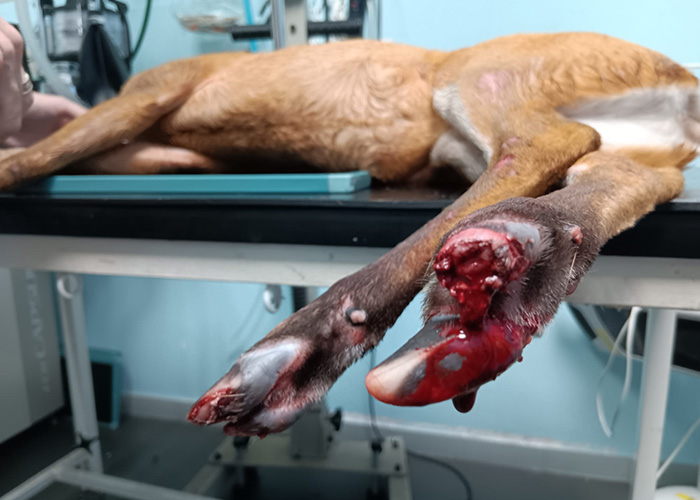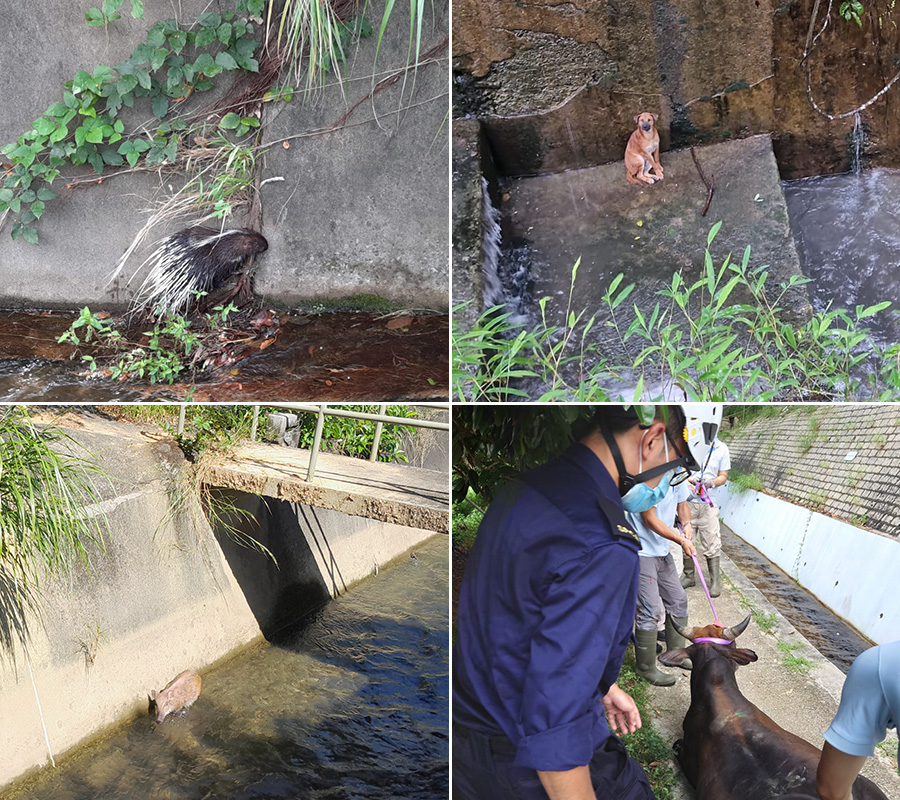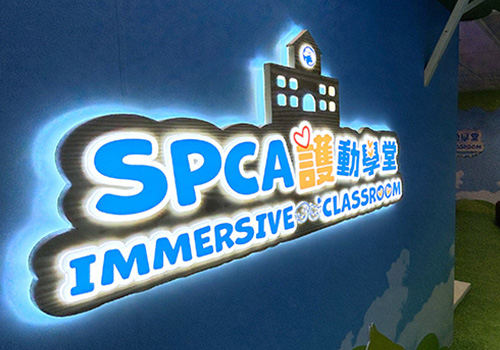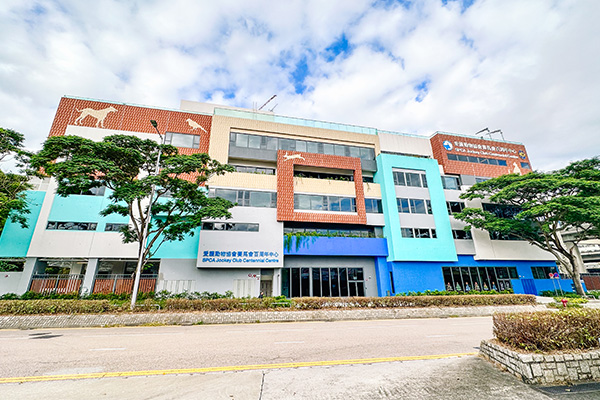Catchwaters play an important role in the maintenance of our slopes by catching surface runoff from hills. These gigantic man-made structures have a combined length of 120 km across 45 water systems in Hong Kong and fragment wildlife habitat.
Here’s the catch with rescuing trapped animals
Due to the design of the catchwater, the animals easily fall into the channel and are unable to get back to ground level.
The animals, desperate to escape, run back and forth, trying to climb back up the wall with no success. They become stressed and may get injured through numerous attempts to climb up the wall of the catchwater.

This barking deer has done some serious damage to their hooves trying to escape the catchwater.
Rescuing the animals is also challenging. The rescuers cannot perform the job on their own as the animals will run the opposite way. They cannot chase the animals as it may frighten them but then the animals will run far. The rescuers have to approach the animals from both sides so at least two persons are required for the rescue mission.
The operations are also restricted by the weather and time. If it is raining, the catchwater would be slippery and might even be flooded, putting the rescuers at risk. If it is dark, this would be too dangerous to walk along the catchwater. So the rescue can only be conducted during the daytime.
For larger animals like cows and wild boars, the rescuers might need to call a vet to the scene in order to anesthetise the animals before lifting them out with a crane.
However, not all animals are in the clear once rescued.
“Trapped deer often suffer from severe stress which builds up toxins in the muscles, causing Capture Myopathy – a medical condition which is almost always fatal.”


Every year, our inspectors handle over 30 cases of animals falling into catchwaters. Victims include dogs and wild animals like barking deer, porcupines, wild boars and cows.
If you discover an animal in danger…
Contact SPCA’s 24-hour hotline at 2711 1000 or AFCD at 1823 for further advice and animal rescue assistance.
So, what can be done?
Potential for more innovative solutions
According to Kadoorie Farm & Botanic Garden (KFBG), the government has made some improvements to catchwaters on Lantau Island, including the use of fencing, anti-skid material and use of ledges to help trapped animals get out. However, more could be done to improve the city’s infrastructure to make it more wildlife-friendly.
Some suggestions from KFBG include:
- Bridges covered with gravel or turf to encourage animals to move across
- Animal-friendly escape routes, so they can exit by their own means without the need for rescue
- Outfit the sides of catchments with gently-sloped ramps and/or appropriately–spaced footholds
With an ever-growing population, Hong Kong will no doubt need to expand on its infrastructure. Whenever we consider future city planning, we should consider our wildlife, with the least disturbance to their habitat. Not only can this save our animals from significant harm, but can also restore and maintain biodiversity in Hong Kong. Hopefully, this will lead to a more harmonious existence between humans and animals.
If you discover an animal in danger…
Contact SPCA’s 24-hour hotline at 2711 1000 or AFCD at 1823 for further advice and animal rescue assistance.
To support our inspector’s animal rescue efforts, scan here to make a donation:





















